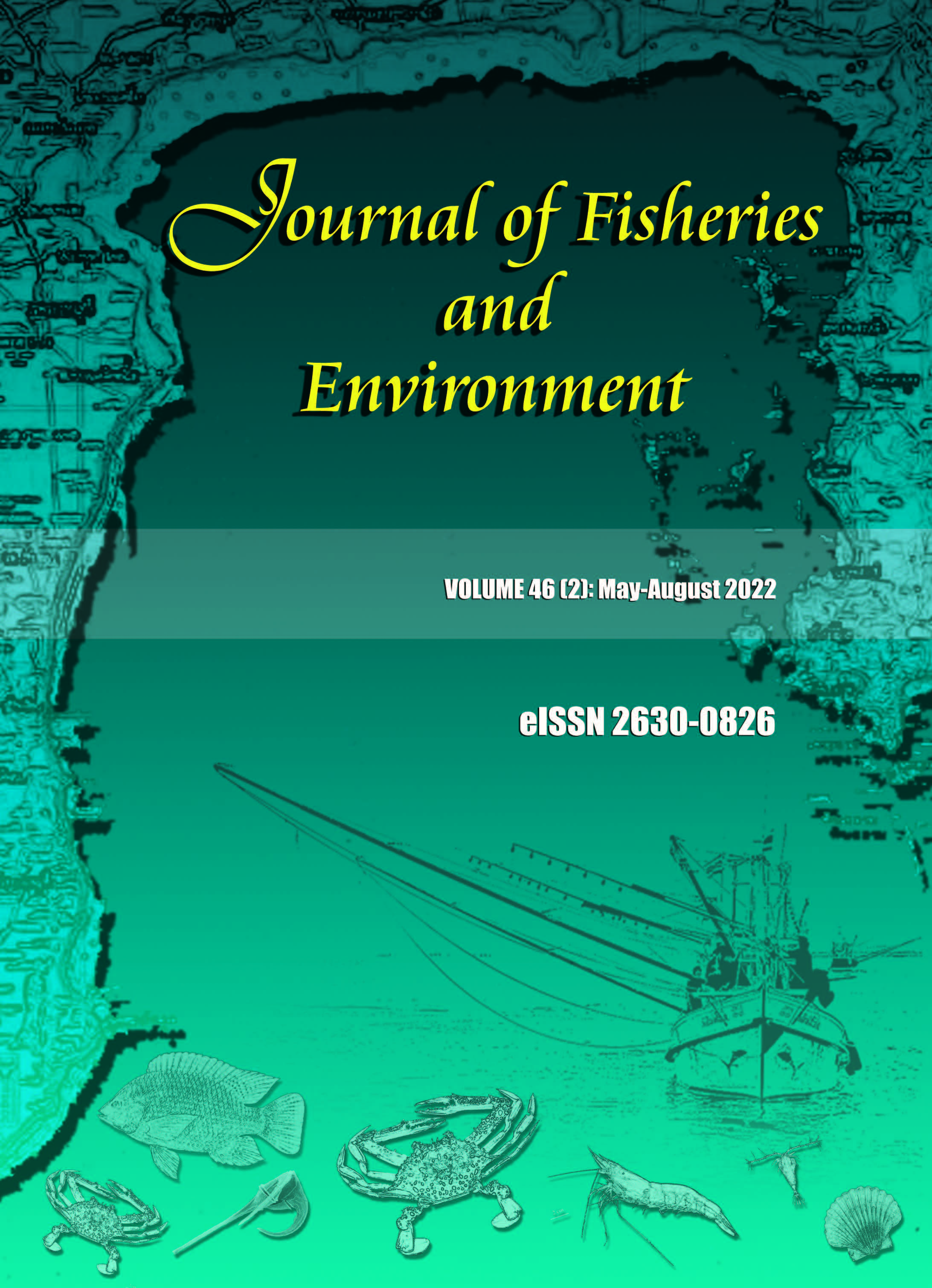Comparative Growth Rates of Cultured Zooxanthellae and the Effects of Temperature and Salinity
Main Article Content
Abstract
Dinoflagellates of the genus Symbiodinium form symbioses with a variety of hosts including hard corals, sea anemones, soft corals, and giant clams. Environmental stresses, especially elevated temperature and decreased water salinity, impair zooxanthellae (Symbiodinium sp.) and cause coral bleaching. To determine the role of temperature and salinity on zooxanthellae, this study was conducted on zooxanthellae isolated from seven marine invertebrate hosts: mushroom coral (Fungia fungites), cauliflower coral (Pocillopora damicornis), sea anemone (Epiactis sp.), soft coral (unidentified), staghorn coral (Acropora millepora), honeycomb coral (Goniastrea sp.) and giant clam (Tridacna squamosa). The growth response of axenic culture was observed at three levels of temperature (27 ºC [control], 30 ºC and 33 ºC) in combination with three levels of salinity: 10, 20, and 30 (control) psu. Cells were sampled and enumerated every two days for 14 days. The results showed that the main effects of host, salinity and temperature each significantly determined growth of zooxanthellae while the interactions between host and temperature and between salinity and temperature were significant. Specific growth rates of zooxanthellae grown in four different combinations of temperature and salinity ranged between 0.371±0.198 and 0.683±0.074 day-1. At 27 ºC and 30 ºC, with a salinity of 10 psu, and at 33 ºC with all salinity levels, most cells died before the end of the experiment. These results suggest that high temperature (33 ºC) and low salinity (10 psu) strongly affect the growth rate of zooxanthellae, and that the combination of high temperature and low salinity also have synergistic effects on the growth of zooxanthellae.
Article Details

This work is licensed under a Creative Commons Attribution-NonCommercial-NoDerivatives 4.0 International License.
References
Baird, A.H., J.P. Gilmour, T.M. Kamiki, M. Nonaka, M.S. Pratchett, H.H. Yamamoto and H. Yamasaki. 2006. Temperature tolerance of symbiotic and non-symbiotic coral larvae. Proceeding of 10th International Coral Reef Symposium 2004: 38-42.
Fujise, L., H. Yamashita, G. Suzuki, K. Sasaki, L.M. Liao and K. Koike. 2014. Moderate thermal stress causes active and immediate expulsion of photosynthetically damaged zooxanthellae (Symbiodinium) from corals. PLoS One 9(12): 1-18: e114321. DOI: 10.1371/ journal.pone.0114321.
Guillard, R.R.L. 1973. Division rates. In: Handbook of Phycological Methods: Culture Methods and Growth Measurements (ed. J.R. Stein), pp. 289-311. Cambridge University Press, London, UK.
Hoegh-Guldberg, O., and G. J. Smith. 1989. The effect of sudden changes in temperature, light and salinity on the population density and export of zooxanthellae from the reef corals Stylophora pistillata Esper and Seriatopora hystrix Dana. Journal of Experimental Marine Biology and Ecology 129: 279-303.
Jokiel, P.L., and S.L. Coles. 1990. Response of Hawaiian and other Indo-Pacific reef corals to elevated temperature. Coral Reefs 8: 155-162.
Kemp, W.D., X. Hernandez-Pech, R. Iglesias-Prieto, K.W. Fitt and W.G. Schmidt. 2014. Community dynamics and physiology of Symbiodinium spp. before, during, and after a coral bleaching event. Association for the Sciences of Limnology and Oceanography 59.3: 788-797.
Klueter, A., J Trapani, F.I. Archer, S.E. Mcllroy and M.A. Coffroth. 2017. Comparative growth rates of cultured marine dinoflagellates in the genus Symbiodinium and the effects of temperature and light. PLoS One 12(11): 1-22: e0187707. DOI: https://doi.org/ 10.1371/journal.pone.0187707.
Kuanui, P., S. Chavanich, V. Viyakarn, M. Omori and C. Lin. 2015. Effects of temperature and salinity on survival rate of cultured corals and photosynthetic efficiency of zooxanthellae in coral tissues. Ocean Science Journal 50: 263-268.
Lesser, M. P. 2011. Coral bleaching: causes and mechanisms. Coral Reefs: An Ecosystem in Transition: 405-419.
Rodolfo-Metalpa, R., C. Richard, D. Allemand, C.N. Bianchi, C. Morri and C. Ferrier-Pages. 2006. Response of zooxanthellae in symbiosis with the Mediterranean corals Cladocora caespitosa and Oculina patagonica to elevated temperatures. Marine Biology 150: 45-55.
Rogers, J.E., and R.H. Davis. 2006. Application of a new micro-culturing technique to assess the effects of temperature and salinity on specific growth rates of six Symbiodinium isolates. Bulletin of Marine Science 79(1): 113-126.
Sakami, T. 2000. Effects of temperature, irradiance, salinity and inorganic nitrogen concentration on coral zooxanthellae in culture. Fisheries Science 66: 1006-1013.
Sammarco, P.W., and K.B. Strychar. 2009. Effects of climate change/global warming on coral reefs: adaptation/exaptation in corals, evolution in zooxanthellae, and biogeographic shifts. Environmental Bioindicators 4(1): 9-45.
Takahashi, S., S.M. Whitney and M.R. Badger. 2009. Different thermal sensitivity of the repair of photodamaged photosynthetic machinery in cultured Symbiodinium species. Proceedings of the National Academy of Sciences of the United States of America 2009: 3237-3242.
Trench, K.R. 1979. The cell biology of plant animal symbiosis. Annual Review of Plant Biology 30: 485-531.
Warner, M.E., W.K. Fitt and G.W. Schmidt. 1996. The effects of elevated temperature on the photosynthetic efficiency of zooxanthellae in hospite from four different species of reef coral: a novel approach. Plant, Cell and Environment 19(3): 291-299.


